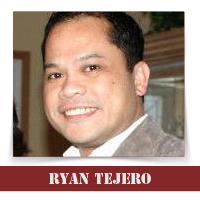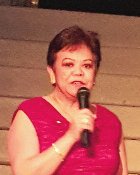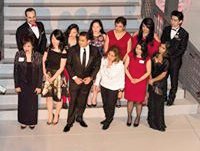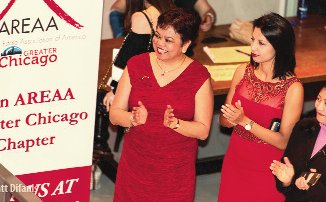
By: Ryan Tejero
(This article (reprinted) was the highlight of Vicky’s leadership in AREAA. She was the first Filipino American who led this prestigious national organization among Asian Americans.)
Asian Americans and Pacific Islanders (AAPI) occupy a unique place in American society. Unlike other minorities, there is no overarching language, religion, or culture that unifies or identifies the group as a whole. This is because the dozens of countries of origin and ethnicities that make up what we refer to as “Asian American” are so vastly different as in some cases have almost no similarities at all.
Despite this, AAPI are usually referred to as if they are a uniform group, with uniform experiences, and uniform success in the US – a mythos known as the Model Minority. This stereotype assumes that all AAPI are highly educated, well-off financially, and generally not in need of government assistance and protections. This could not be further from the truth. While some in the AAPI community have experienced tremendous personal success, many more have not. The Model Minority Myth masks the experiences of the less fortunate and through its prevalence has created a vacuum of policy and research into the community at-large.
The tangible effect of this vacuum could be said to be inclusion of AAPI into the “other” racial category in government, academic, and business research and policy papers. The “other” category is typically defined as Asian Americans and Pacific Islanders, Native Alaskans and Hawaiians, and people of two or more races. The AAPI community is currently the fastest growing population in the US, having seen an astounding 46% growth rate from 2000-2010. AAPI are projected to more than double their population by 2050, and China and India have replaced Mexico as the largest source of immigrants to the US. Because of this, many AAPI advocacy groups feel it is time to begin dis-aggregating AAPI data so that policymakers, business leaders, and academics have the information needed to understand the issues affecting this dynamic community.
The Asian Real Estate Association of America (AREAA) is one of these advocacy groups. AREAA’s core mission is to promote homeownership in the AAPI community by advocating for policies at the national and local levels, and by empowering those who serve the market. Over the last five years, the AAPI community has been the largest and most active minority participant in the US mortgage market, having applied for and secured more loans, in both total number and dollars originated, than any other minority. Despite this, there is still very little in the way of housing data and research when it comes to the AAPI demographic.
As National Association of REALTORS® Chief Economist Lawrence Yun states, it’s important to have this data because “[…]one can examine the special obstacles AAPI community may be facing in realizing the American Dream of ownership. Is it due to high housing costs in regions where many AAPI reside or is it due to credit access difficulty that is unique to the community? A better understanding of the sources of the problem means better ways to help address and redress the problem.”
One of the most widely reported and influential reports on homeownership, the US Census Department’s Quarterly Residential Vacancies and Homeownership report, still had AAPI into this “other” category. The Census did include a distinct “Asian” category in their annual report, however, in real estate only having annual data is simply not good enough. When asked, the Census Department stated that the sample size for AAPI was too small to get an accurate sample.
In early 2016, AREAA National Chair Vicky Silvano and Chairman Emeritus Jim Park seized upon this opportunity and began what would be known as the “No Other” campaign, which sought to get AAPI a stand alone category in this critical report. Putting together a coalition of real estate partners, government leaders, and working directly with the Census Department, AREAA began to make the case as to why a new category is needed.
As AREAA promoted the campaign to its members across the country, it became clear this was now more than just a homeownership report. Having accurate data about the fastest growing population and the largest participants in the mortgage market was certainly the ultimate goal; however, the campaign had struck a chord with many in the AAPI community. It was about more than just numbers now, it was about acceptance and inclusion by a nation that for so long treated the AAPI community as the “perpetual foreigner,” someone who never truly belongs to the group (a running joke among some in the community is asking, “No, where are you really from?” – a reference to a follow up question many, get asked when they tell someone where they were born, even if it was in the US).
On July 28th, 2016, for the first time ever, the US Census Department’s Quarterly Residential Vacancies and Homeownership report included a distinct category for Asian Americans and Pacific Islanders. Immediately, the impact was noticeable. On previous versions of the report, the homeownership rate for AAPI, only measured as part of the “Other” category, was listed at 59%; however once there was a distinct category for AAPI, the rate was only 55.9%. This is the importance of accurate data.
“This is not just a victory for today. The effect of this change will be felt for generations, as policymakers will now have the data necessary to understand housing in our community,” said Silvano. “I applaud the Census Department for their willingness to work with us and affect this change, and I want to thank all of those who had a hand in this historic event. As more research disaggregates data for the AAPI community, a clearer picture will be painted for policymakers to understand the issues affecting us. I am proud to have been a part of this movement, and to have worked with so many great people and institutions to make it happen.”

Vicky Silvano, AREAA National Chair 2016, addressing the audience at the AREEA 2017 Inaugural Ceremony & Gala held at Artifact Events Chicago on February 9, 2017.

Inauguration Ceremony of the AREAA 2017 officers & Board of Directors, headed by Kashyap Trivedi.

AREAA was founded in 2003 and has over 15,000 members nationally and internationally. Vicky Silvano, National Chair 2016, is the only Filipino member of the AREAA Board of Directors. She is shown with some AREAA members. Photo by Mark Difanis
 VIA Times – February 2017 Issue Vital News, Vibrant VIews for Asian Americans in Chicago & Midwest
VIA Times – February 2017 Issue Vital News, Vibrant VIews for Asian Americans in Chicago & Midwest

